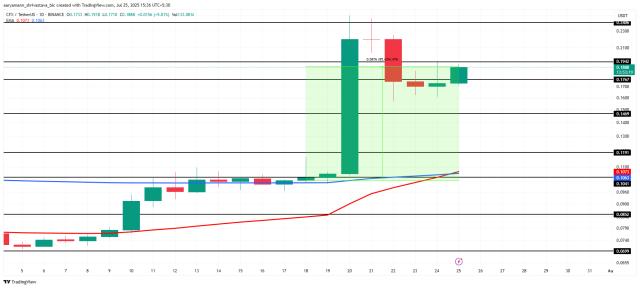The global stablecoin supply has exceeded 250 billion USD with a monthly payment volume of 1.4 trillion USD.
A report from CertiK shows that USDT, USDC, PYUSD, and RLUSD are leading in security, market efficiency, and compliance, while the industry's risk trend has shifted from contract vulnerabilities to centralized platform operational errors.
- Global stablecoin supply exceeds 250 billion USD with monthly trading volume of 1.4 trillion USD.
- USDT, USDC, PYUSD, and RLUSD lead in security and compliance.
- Real World Asset (RWA) stablecoins and yield-based stablecoins are developing rapidly, expected to capture 8%-10% of the market by 2025.
What are Stablecoins and the Current Market Overview?
Official data from CertiK, the leading Web3 security company, confirms that stablecoins are cryptocurrencies that maintain stable prices by being pegged to real assets or fiat currency. By mid-2025, the total stablecoin supply had exceeded 250 billion USD with a monthly trading volume reaching 1.4 trillion USD.
Stablecoins are widely used in DeFi and cryptocurrency trading due to their stability, minimizing price volatility compared to traditional coins.
Which Stablecoins Lead in Security, Performance, and Compliance?
USDT, USDC, PYUSD, and RLUSD are currently the most prominent stablecoins in terms of security, market performance, and strict regulatory compliance, according to CertiK's Stablecoin Panorama Report for the first half of 2025.
Maintaining transparency and legal compliance helps these stablecoins build strong trust from users and investors.
Top stablecoins need to maintain transparency and tight risk control to ensure sustainable long-term development.
John Qin, CEO CertiK, 2025
What are the Current Main Risks in the Stablecoin Industry?
By 2025, risks in the stablecoin sector have clearly changed, shifting from smart contract vulnerabilities that were previously frequently exploited to operational errors on centralized platforms.
This highlights the importance of oversight and risk control not just in technology, but also in platform operational management processes.
Development Trends of Real World Asset and Yield-Based Stablecoins?
According to the CertiK report, Real World Asset (RWA) stablecoins and yield-based stablecoin streams are developing strongly, estimated to capture 8% to 10% of the stablecoin market by the end of 2025.
This trend reflects the need to diversify pegged value sources and increase profitability in the cryptocurrency ecosystem, while also driving the development of new generation DeFi products.
Real asset-based stablecoins help improve stability and provide sustainable profit opportunities for investors.
Emily Zhang, Cryptocurrency Analyst, Stanford University, 2025
What Factors Determine the Long-Term Sustainability of Stablecoin Projects?
The CertiK report emphasizes that transparency in legal compliance, along with effective risk control, are essential factors in ensuring the stable development of stablecoin projects in the international market.
Projects maintaining high standards of compliance and governance will have a significant advantage, laying the foundation for trust and sustainable scale expansion.
Frequently Asked Questions
What are Stablecoins?
Stablecoins are cryptocurrencies that maintain stable prices by being pegged to real assets or fiat currency, reducing price volatility to facilitate trading and value storage.
Which Stablecoins are Most Highly Rated Currently?
USDT, USDC, PYUSD, and RLUSD are recognized as leading in security, performance, and legal compliance according to the 2025 CertiK report.
What is the Biggest Current Risk for Stablecoins?
The primary risk has shifted from smart contract vulnerabilities to difficulties in operating centralized platforms, requiring more thorough monitoring.
What are Real World Asset Stablecoins and Why are They Important?
Stablecoins pegged to real assets aim to increase stability and provide yield sources, expanding the application and diversity of the cryptocurrency market.
How Do Stablecoins Ensure Long-Term Development?
Legal transparency and strict risk control help build trust and promote sustainable development in the global market.






